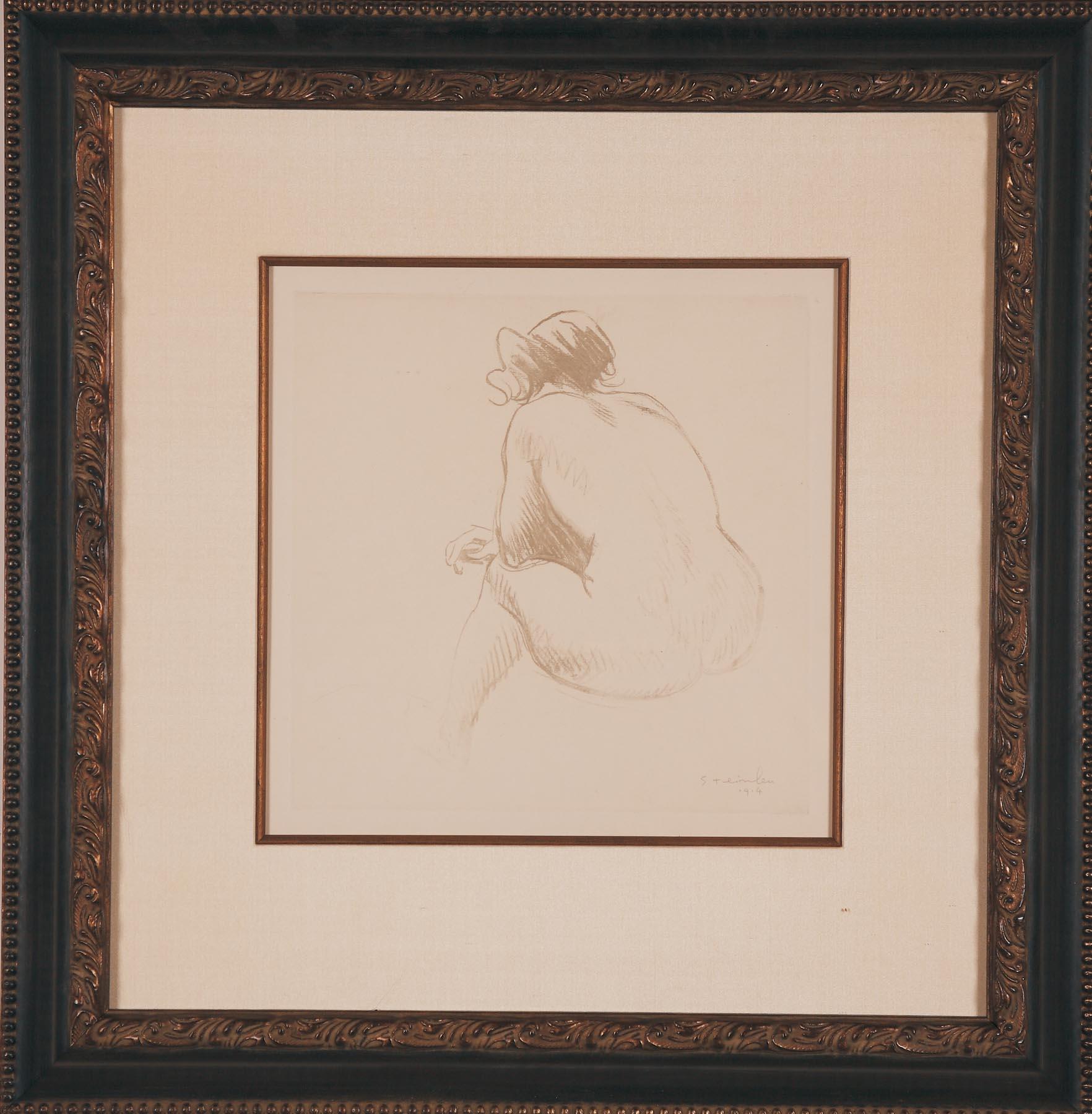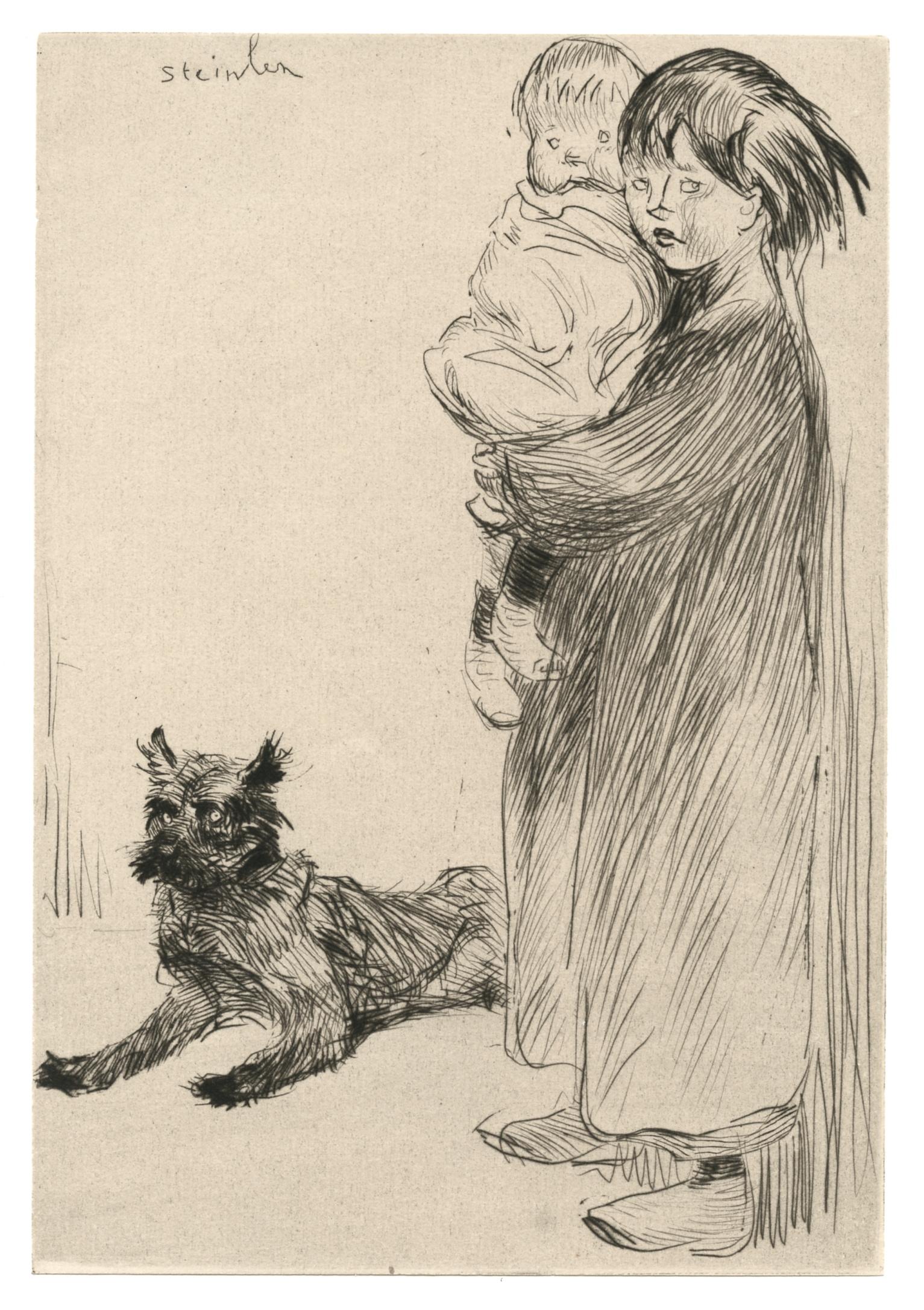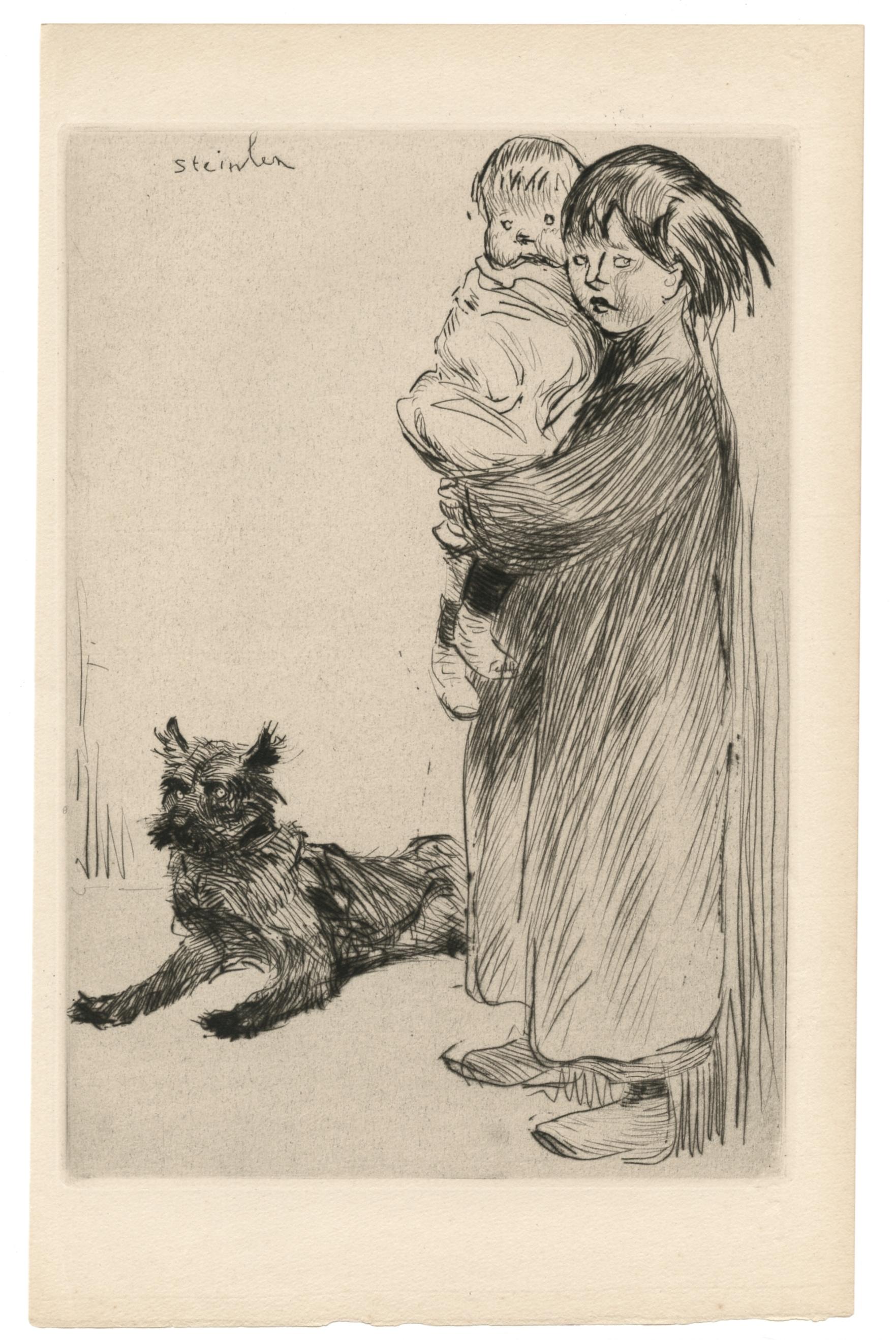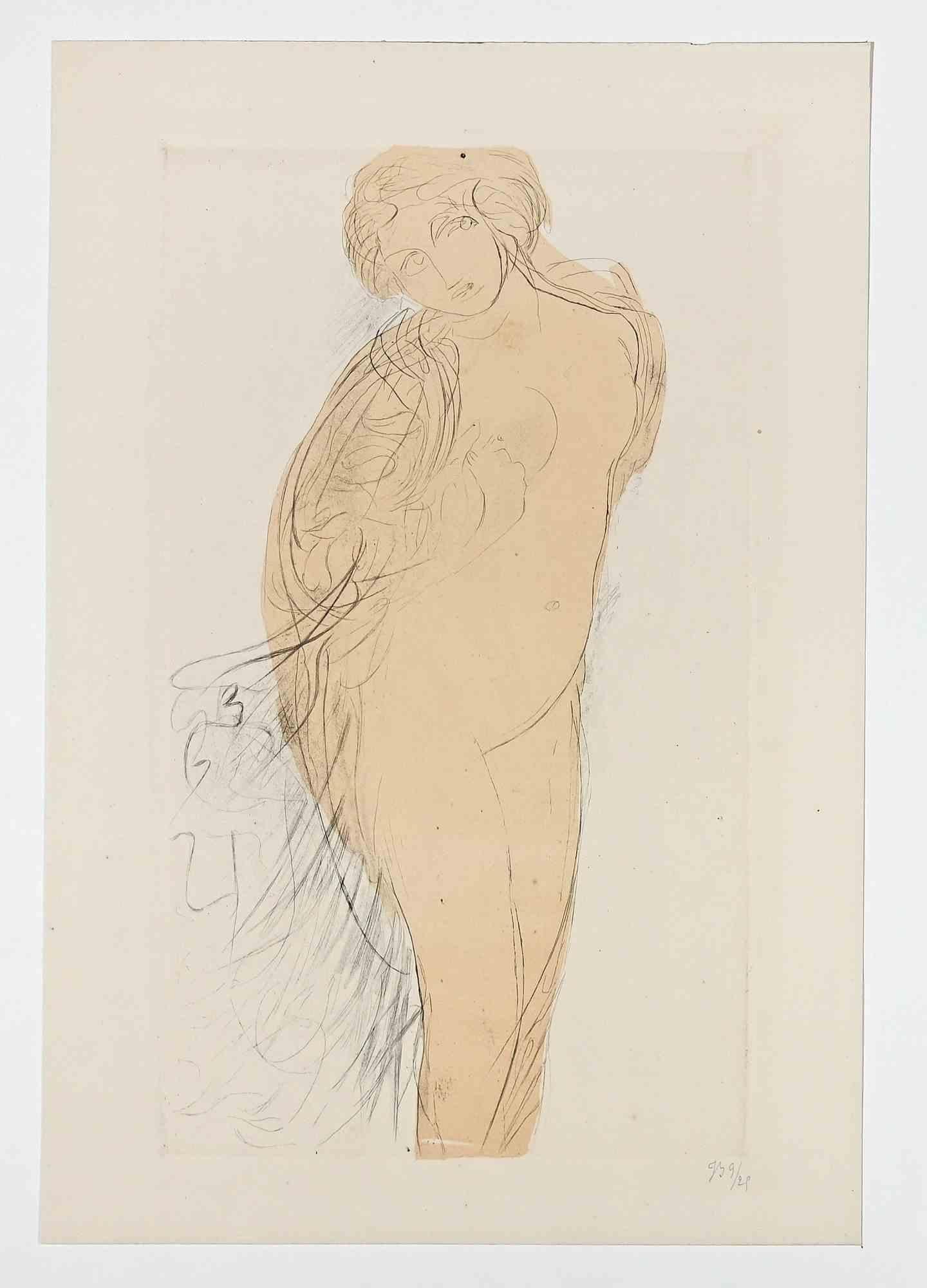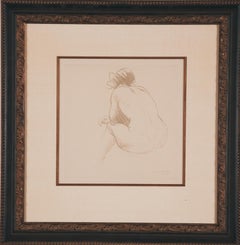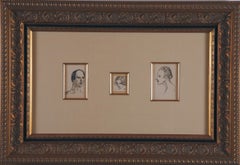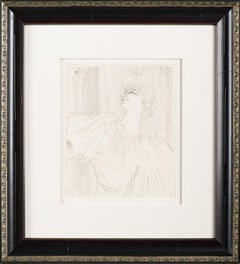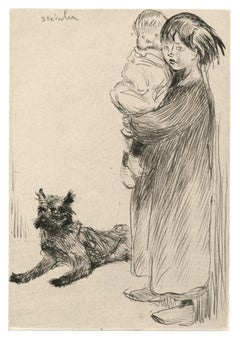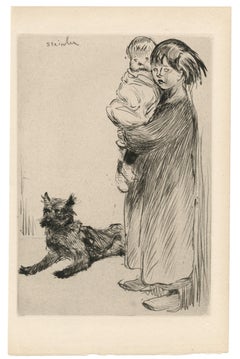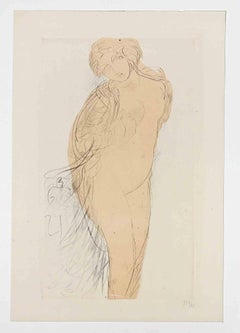Items Similar to "Femme au Boa" etching by Steinlen
Want more images or videos?
Request additional images or videos from the seller
1 of 10
Théophile Alexandre Steinlen"Femme au Boa" etching by Steinlen1900
1900
$4,950
£3,839.16
€4,351.54
CA$7,084.30
A$7,741.06
CHF 4,013.22
MX$92,477.96
NOK 51,070.71
SEK 47,814.29
DKK 32,493.85
About the Item
STEINLEN, THEOPHILE ALEXANDRE
(1859 -1923)
"Femme au Boa"
Crauzat 61
Etching, Drypoint and Aquatint, c. 1900
Signed in pencil, lower right
From the edition of 13 total impressions
Image Size: 8 5/8” x 5 ½”
The Parisian woman of Paris-fashionably dressed in the city’s café-concerts or on the boulevards was a staple theme rife with meaning in the art and literature of late 19th-century France. From the bourgeois beauty at her mirror to the elegant and successful courtesan, from shop clerks to dancers, the female body and persona occupied center stage within the spectacle and sophistication of belle époque Paris. Steinlen produced hundreds of images of women in different media, including a number of lithographic covers for the publication Gil blas illustré to accompany the short stories of contemporary realist authors. A major artist of the French Art Nouveau era, Theophile Alexandre Steinlen came to Paris from his native Switzerland at the age of twenty. Mainly self-taught, he quickly established himself as aleading illustrator of popular journals such as Le Rire. He also contributed a large amount of drawings and lithographs to the radical press publications, Pere Peinard, Les Temps Nouveaux and La Chambard. In order to avoid political repercussions for some of his art dealing with strong social content he often employed pseudonyms such as, 'Treelan' and 'Pierre'. In the 1890's Steinlen's wonderful use of line and design led to some of the most famous posters of the Art Nouveau movement. These include, Tournee du Chat Noir(1896), La Rue(1896) and Lait pur Sterilise(1894). Yet the majority of his art continued to explore the life of the poor and humble. Known as "the Millet of the Streets", Steinlen's influence was vast. Among other artists both Toulouse-Lautrec and the young Picasso paid direct homage to his art. In total, Steinlen created 382 original lithographs and 115 etchings. Like Toulouse-Lautrec, Steinlen contributed some original lithographs to publishers of popular songs who would use them as cover art for their sheet music. Théophile Steinlen died in 1923 in the Cimetière Saint-Vincent in Montmartre. Today, his works can be found at many important museums around the world including at the Hermitage Museum in St. Petersburg, Russia and the National Gallery of Art in Washington, D.C., United States.
- Creator:Théophile Alexandre Steinlen (1859 - 1923, French)
- Creation Year:1900
- Dimensions:Height: 24.5 in (62.23 cm)Width: 20.5 in (52.07 cm)Depth: 2 in (5.08 cm)
- More Editions & Sizes:From tonal edition of 13Price: $4,950
- Medium:
- Movement & Style:
- Period:
- Condition:This piece is in excellent condition for a piece of it's age. It is in a custom frame with UV protective plexiglass.
- Gallery Location:Hinsdale, IL
- Reference Number:Seller: 12591stDibs: LU138426826062
Théophile Alexandre Steinlen
Theophile Alexandre Steinlen was born in Lausanne in 1859. He was naturalized French in 1901. He was a painter, engraver, illustrator, poster artist and sculptor. Before settling in Paris, he made a detour to Mulhouse where one of his uncles placed him in the studio of one of the best lithographers of the time. He settled definitively in Montmartre in 1881. Willette introduced him to his companions of the Cabaret du Chat-Noir animated by Rodolphe Salis. He met Toulouse-Lautrec, Forain, Léandre, Debussy, Eric Satie, Verlaine, Alphonse Allais and Aristide Bruant. He took part in the performances of the famous cabaret's shadow theater with animal stories and, most often, sequences featuring cats, for which he has a particular affection. The felines will appear throughout his activity as "parentheses" in a tormented work. There is, in this torment, the expression of no personal problem but a painful compassion for the lives of the exploited and marginal beings. He painted and drew idylls, balls and bastrings, workers, kids and gosselin, the poor, the little workers, girls and marlous. He sometimes made posters. In the most successful of them (« Le lait pur de la Vingeanne » et le « Fer Bravais ») he imposed, relevant or not, the presence of cats.
In 1901, Steinlen worked for L'Assiette au beurre , the most virulent satirical newspaper ever published and takes readily to target the institutions of the 3rd Republic.
His works are found in numerous Public Collections, such as Petit Palais in Geneva, Hermitage Museum in Saint Petersburg, and the National Gallery of Art in Washington.
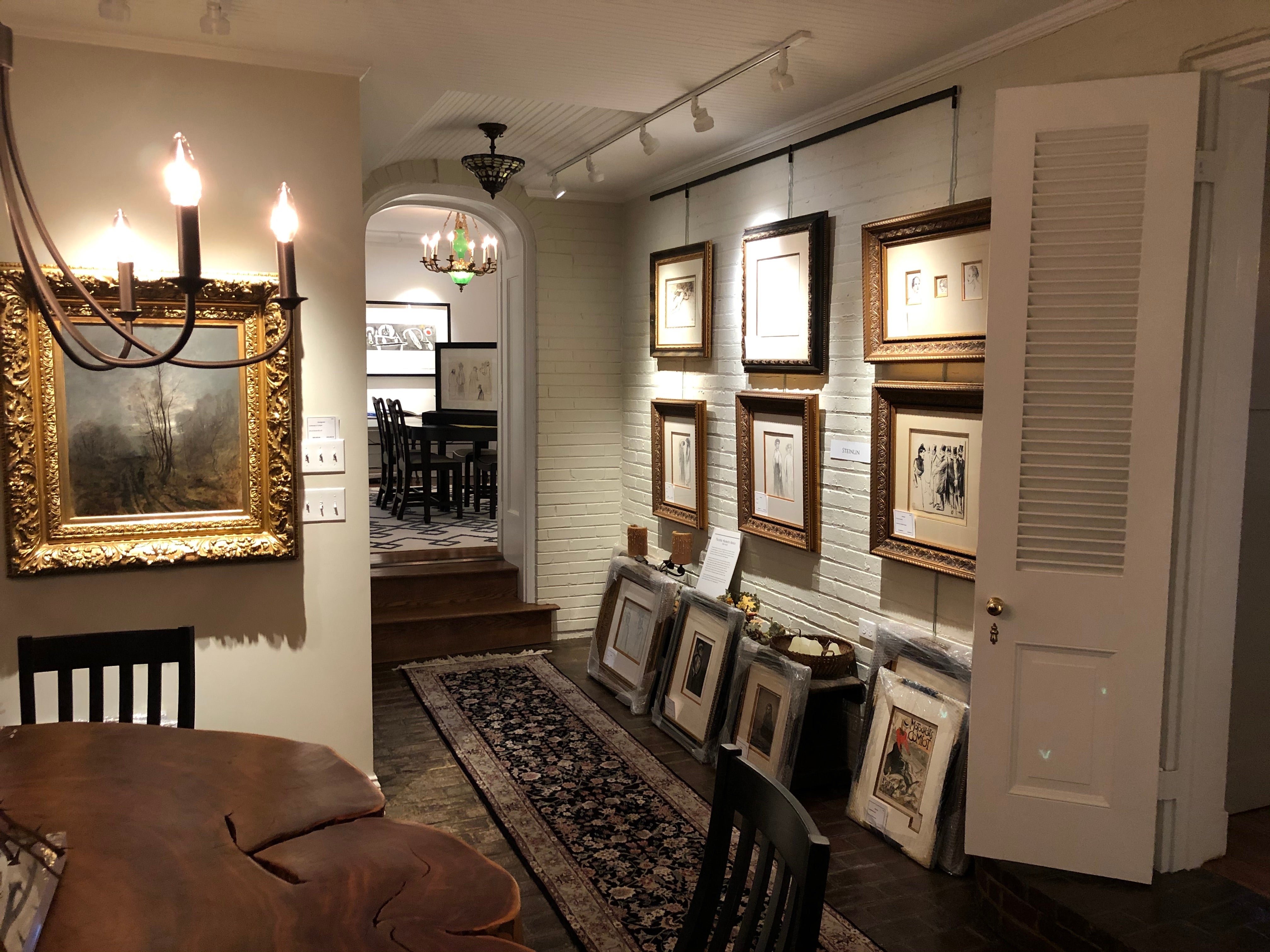
About the Seller
5.0
Recognized Seller
These prestigious sellers are industry leaders and represent the highest echelon for item quality and design.
Gold Seller
Premium sellers maintaining a 4.3+ rating and 24-hour response times
Established in 1994
1stDibs seller since 2020
47 sales on 1stDibs
Typical response time: 3 hours
- ShippingRetrieving quote...Shipping from: Hinsdale, IL
- Return Policy
More From This Seller
View All"Femme Nue" by Theophile Steinlen
By Théophile Alexandre Steinlen
Located in Hinsdale, IL
Theophile Alexandre Steinlen
"Femme Nue"
Etching, 1914
Signed and dated in pencil in lower right
Provenance: From the atelier of the artist
A major artist of the French Art Nouvea...
Category
1910s Art Nouveau Figurative Prints
Materials
Etching
"Femme Nue" by Steinlen
By Théophile Alexandre Steinlen
Located in Hinsdale, IL
STEINLEN, THEOPHILE ALEXANDRE
(1859 -1923)
"FemmeNue"
(A Nude Woman)
Original etching, c. 1900
Signed and numbered in Pencil
Provenance: From the atelier of the artist
Image Size: ...
Category
Early 20th Century Art Nouveau Figurative Prints
Materials
Etching
Original ink drawings "Trois Portraits" by Steinlen
By Théophile Alexandre Steinlen
Located in Hinsdale, IL
STEINLEN, THEOPHILE ALEXANDRE
(1859 -1923)
"Trois Portraits"
(Three Portraits)
Original ink drawings, c. 1900
Initialed in ink by the artist
Bears artist monogram stamp in black in...
Category
Early 20th Century Art Nouveau Figurative Drawings and Watercolors
Materials
Pen
"Yvette Guilbert" by Toulouse-Lautrec
By Henri de Toulouse-Lautrec
Located in Hinsdale, IL
TOULOUSE-LAUTREC, HENRI DE
(1864-1901)
"Yvette Guilbert – A Menilmontant de Bruant"
Delteil 255, Adhemar 311
Lithograph printed in black with beige t...
Category
1990s Art Nouveau Figurative Prints
Materials
Lithograph
"Trois Portraits" drawings from the sketch book of Theophile Steinlen
By Théophile Alexandre Steinlen
Located in Hinsdale, IL
Theophile Alexandre Steinlen
"Trois Portraits"
Original ink drawing, c. 1900
Initialed in ink by artist
Bears artist monogram stamp in black image (with signature cat's tail)
From...
Category
Early 20th Century Art Nouveau Figurative Drawings and Watercolors
Materials
Ink, Pen
"Dame a la Toque", fabulous drypoint etching by Paul Cesar Helleu
By Paul César Helleu
Located in Hinsdale, IL
HELLEU, PAUL CÉSAR
(1859 - 1927)
"La Dame a la Toque"
(Lady in Fur Hat)
Montesquiou XXXVI, c. 1906
Drypoint printed in colors on pale cream wove paper
Signed in black crayon lower ...
Category
Early 20th Century Post-Impressionist Portrait Prints
Materials
Drypoint
You May Also Like
Les Voila
By Théophile Alexandre Steinlen
Located in San Francisco, CA
Artist: Theophile Alexandre Steinlen (Swiss, 1859-1923)
Title: Les Voila
Year: 1915
Medium: Original lithograph
Edition: Numbered 73/100 in pencil
Paper: Wove
Size image: 16 ...
Category
Early 19th Century Academic Figurative Prints
Materials
Lithograph
"La grande sœur" original drypoint
By Théophile Alexandre Steinlen
Located in Henderson, NV
Medium: original etching and drypoint. Catalogue reference: Sanchez and Seydoux 1913-10. Printed in 1913 and published in Paris by Gazette des Beaux-Arts. Sheet size: 8 1/2 x 6 inche...
Category
1910s Portrait Prints
Materials
Etching
"La grande sœur" original drypoint
By Théophile Alexandre Steinlen
Located in Henderson, NV
Medium: original etching and drypoint. Catalogue reference: Sanchez and Seydoux 1913-10. Printed in 1913 and published in Paris by Gazette des Beaux-Arts. Plate size: 8 3/4 x 6 1/8 i...
Category
1910s Portrait Prints
Materials
Etching
Woman - Original Etching by Jeanne Bardey - Early 20th Century
By Jeanne Bardey
Located in Roma, IT
Woman is an original etching realized in Early 20th Century after Auguste Rodin by French artist Jeanne Bardey (1872 - 1954)
Numbered.Edition, 9/25.
Good conditions.
Jeanne Barde...
Category
Early 20th Century Modern Figurative Prints
Materials
Etching
Portrait - Etching by Théophile Alexandre Steinlen - 1914
By Théophile Alexandre Steinlen
Located in Roma, IT
Portrait is an original black and white etching realized in 1914 by Théophile Alexandre Steinlen.
Signed and dated on the plate on the lo...
Category
1910s Modern Portrait Prints
Materials
Etching
Femme de Chagrin
By Théophile Alexandre Steinlen
Located in New York, NY
Theophile Alexandre Steinlen (1859-1923), Femme de Chagrin, 1894, lithograph, signed in pencil lower right [also signed in the plate lower center]. Reference: Crauzat 454, first stat...
Category
1890s Post-Impressionist Figurative Prints
Materials
Color Pencil, Lithograph
More Ways To Browse
Antique St Petersburg Russia
Tan Tan Bo
Tarkay Serigraphs Signed
Tarot Card Box
Thank You For The Wonderful Destiny
The Emperor Jones
The Goddess Dali
The Little Beggar
The Vintage Fort
The Wailing Wall Dali
Thomas Mcknight Venice
Tim Doyle
Tran Nguyen Hieu
Tranquillo Marangoni
Trolley Banksy
Utagawa Kunisada 1857
Vasarely Juggler
Velvet Elvis
